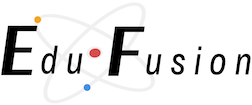Social learning and multimedia instructional tools connect naturally in the online classroom. Where multimedia can transform the classroom into an engaging learning environment, social media platforms can leverage those advantages and, in many ways, take engagement further by facilitating student collaboration outside of the classroom. Too, as more organizations embrace social media platforms to contribute to organizational goals, utilizing these in tandem for the purpose of instruction can offer value to students that reaches into their professional lives. When exposed to these tools within a framework of formal learning, they build familiarity with the process of using them to share professional knowledge and collaborate in the workplace in less formal ways.
We learn so much through social interaction that a great deal of the knowledge we build is gained alongside each other. Social learning technologies can remove some of the barriers between instructors and students, as well as between students, and create an informal and collegial learning environment that is highly interactive. They can facilitate continuing conversations without time constraints, support the development of communities of learners going beyond the classroom, and help learners become “more aware of their own learning process, more mindful of and deliberate about their own learning, and encourage them to take ownership of learning” (Bozarth, 2010, p. 13).
Imagine implementing an instructional video centered on teaching a concept. Learning can be promoted through classroom discussions on that video content, however, extending those discussions beyond the classroom through the use of a platform such as Twitter can extend them and promote deeper learning. Connecting students to each other outside of the classroom in a manner that is convenient to them can provide more opportunities for collaboration, and social media platforms can do just that.
There is an impressive array of social media that can be used for social learning purposes and it’s important to first understand what must be accomplished and choose the tools best suited to that purpose. As Bozarth (2010) explains, “Facebook is a hammer, a Wiki is a saw, and each is suited to different overarching goals” (pp. 16-17). Twitter can be effective for microblogging, Facebook for developing learning communities, and Wikis to facilitate collaborative editing. Accordingly, social learning technology tools should be chosen based on instructional goals. But each of these presents advantages along with disadvantages and understanding them is a key to utilizing them effectively.
Twitter is effective for sharing quick ideas, links, and other information formats. It can connect users to industry experts and like-minded practitioners, providing a quick flow of information and a single feed available to all. But linear, sequential thinkers can struggle with a lack of control. It isn’t suited to archiving searchable information, but rather is at its best in serving as a real-time, interactive stream of information (Bozarth, 2010).
Facebook can combine many different forms of social media and is easy to use and intuitive for most people. It is suited to putting everyone in frequent contact with each other and can serve as a robust platform on which to build a community. It can be effective in building a learning community, hosting an entire course or supplementing a classroom-based course. Some examples of specific functions include “communicating assignments, offering reminders, posting notes, providing documents, videos, and slide shows, messaging individuals or groups, hosting online discussions and real-time chats, and scheduling events” (Bozarth, 2010, p. 55).
Blogs are well-suited to posting chronologically ordered information and can include various multimedia such as text, photo, video, audio, and links to other online sources of information. Students can respond, making it highly interactive, and it can host an entire course. Blogs are not cost-prohibitive and can even require not expense to build and implement. Additionally, they can provide instructors with valuable metrics on student usage. They can be challenging to maintain and often are perceived as more formal than tools like Facebook and Twitter (Bozarth, 2010), but offer some great advantages for a wide variety of instructional goals.
A Wiki can facilitatecollaboration, editorship, and data compilation and is somewhat unique in that it can allow all members to change its content.It offers classroom benefits such as “learner-built development of a permanent, takeaway record of the particular course session; a record of the course over various iterations or offerings across time; and a compilation of FAQs…” (Bozarth, 2010, p. 109). It can also be used for implementing individual or team-based projects due to it being well-suited to collaborative work and supporting learners who are geographically dispersed. The fact a Wiki they can become disorganized as it grows can be a disadvantage, but planning and organization are effective in diminishing the impact of this characteristic (Bozarth, 2010).
The use of social media platforms for learning in the online classroom doesn’t change how multimedia instructions tools should be implemented. Rather, it opens new avenues for collaboration on, and learning from, multimedia instructional pieces. The efficacy of multimedia instructional tools is increased by the use of social learning, and vice versa. As Nussbaum-Beach (2012) explains, “connected learning helps educators realize the potential for professional learning and the pedagogical shifts afforded by current and emerging web technologies” (p. 19). Social learning not only improves learning transactions created by multimedia instructional tools but also creates more of them. The two perfectly complement each other to help transform the learning environment into one that is rich in engagement and broad in learning opportunities.
Have you implemented any social learning platforms in conjunction with multimedia learning tools into your classroom? What are your experiences and observations? I would love to hear! Contact me at william.stewart@edufusion.org.
References
Bozarth, J. (2010). Social media for trainers: techniques for enhancing and extending learning. San Francisco, CA: Pfieffer.
Nussbaum-Beach, S., & Hall, L. (2012). The connected educator: learning and leading in a digital age. Bloomington, Indiana: Solution Tree Press.

